Inside Thanh Tang’s Data-Informed Workflow
Available in:
EN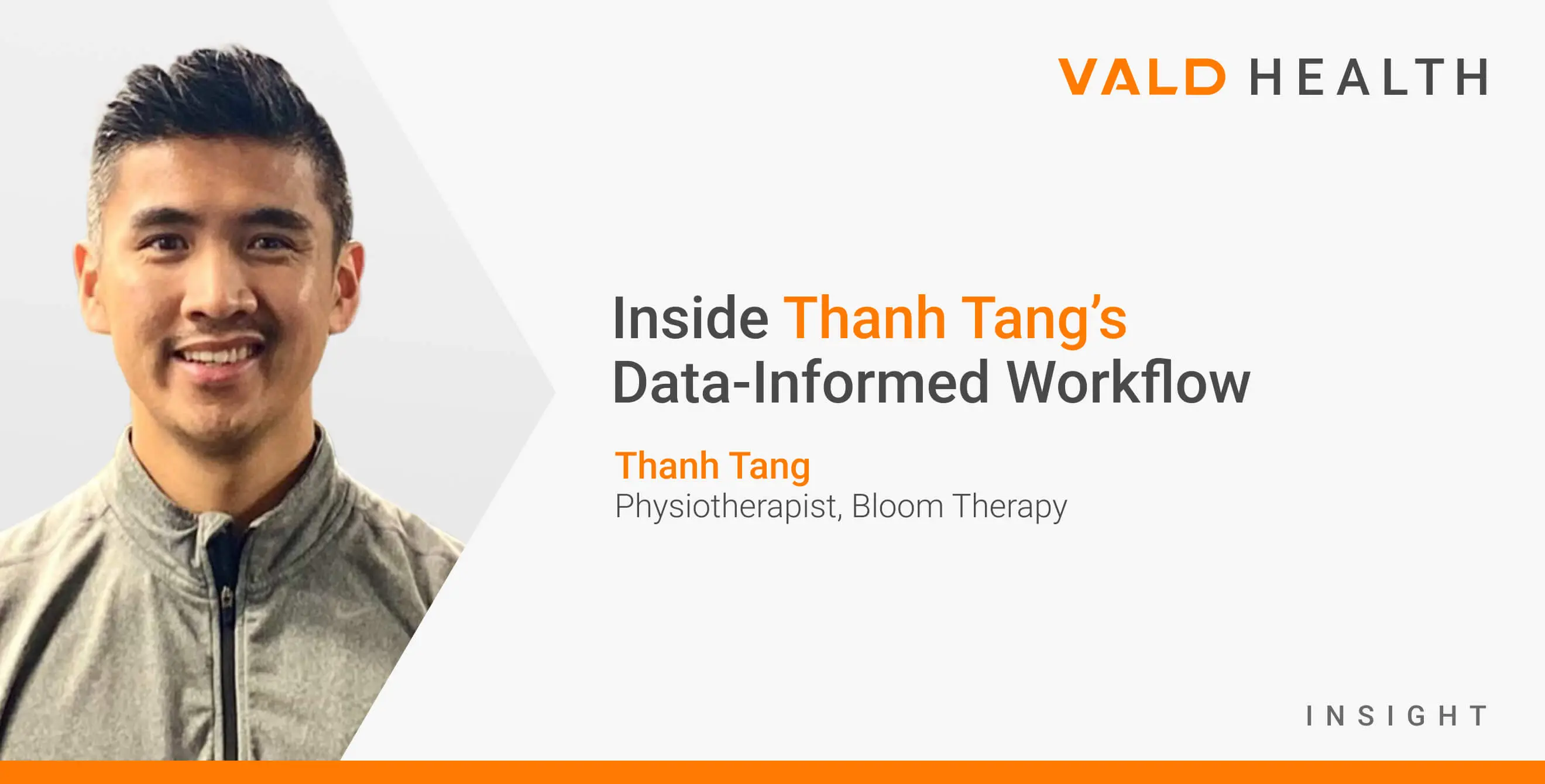
Thanh Tang is a physiotherapist in Spruce Grove, Alberta, Canada, specializing in running-related injuries, performance and long-term movement health. He integrates technologies such as DynaMo, ForceDecks and MoveHealth into his everyday practice to perform best-practice assessments and deliver treatment services that help patients recover, build resilience and reach their goals.
Can you describe your clinic environment?
We’re a multidisciplinary clinic with seven physiotherapists, alongside more than 20 other practitioners – including chiropractors, massage therapists and acupuncturists. As physios, our caseloads are varied, but we see a lot of active individuals – youth athletes, runners, recreational athletes and post-operative patients who aim to return to their previous level of performance.
How has objective measurement technology changed your workflow?
We started using technology in 2022, first with DynaMo, and then added ForceDecks and blood flow restriction (BFR) technology. Since then, technology has been a constant in our clinic, with at least one form of testing or training technology being used at any time, if not all at once. It has a significant impact on how our practitioners assess and develop exercise programs for our patients.
…technology has been a constant in our clinic, with at least one form of testing or training technology being used at any time, if not all at once.
VALD Hub is open during every session. When patients walk in, I can test them immediately through the ForceDecks or DynaMo app and visualize their data to educate on progress and guide the rest of the session.
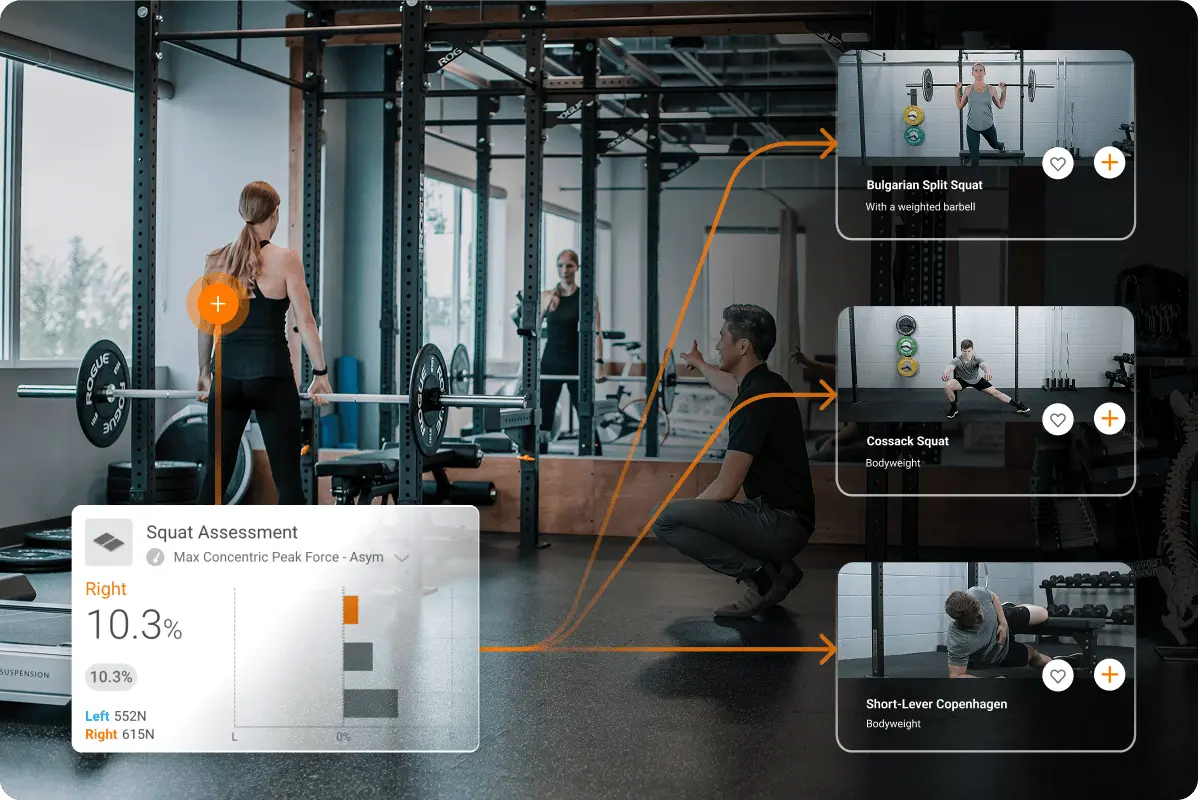
Physiotherapist integrating home exercise programs (HEPs) from MoveHealth based on previously collected ForceDecks data.
I like having the flexibility to use different platforms depending on the session. The ForceDecks Windows app gives me access to raw force traces and more granular analysis, which is great when I want to dive deep into the data. On the other hand, VALD Hub and the ForceDecks iOS app provide quick, visual feedback with customized metrics that are easy to share with patients in real time.
Having both options means I can match the level of detail to the context – whether it’s a fast-paced session or a more in-depth assessment.
Having both options means I can match the level of detail to the context – whether it’s a fast-paced session or a more in-depth assessment.
How is your patient experience different from other clinics?
With the technology we use, we see a significant increase in clarity for our clinicians and motivation for our patients. Most patients – especially younger ones – respond well to data. Seeing a 10% increase in quad strength or an improvement in asymmetry from the previous month is far more impactful for patients than being told, “You’re looking better.”
…[data] adds clarity for our clinicians and motivation for our patients.
Visual feedback plays a key role. Green indicators, clear trends and progress graphs give patients something to rally around and help guide practitioners through the rehabilitation process. This allows both our patients and practitioners to shift from a pain-centric model to one that focuses on performance as well.
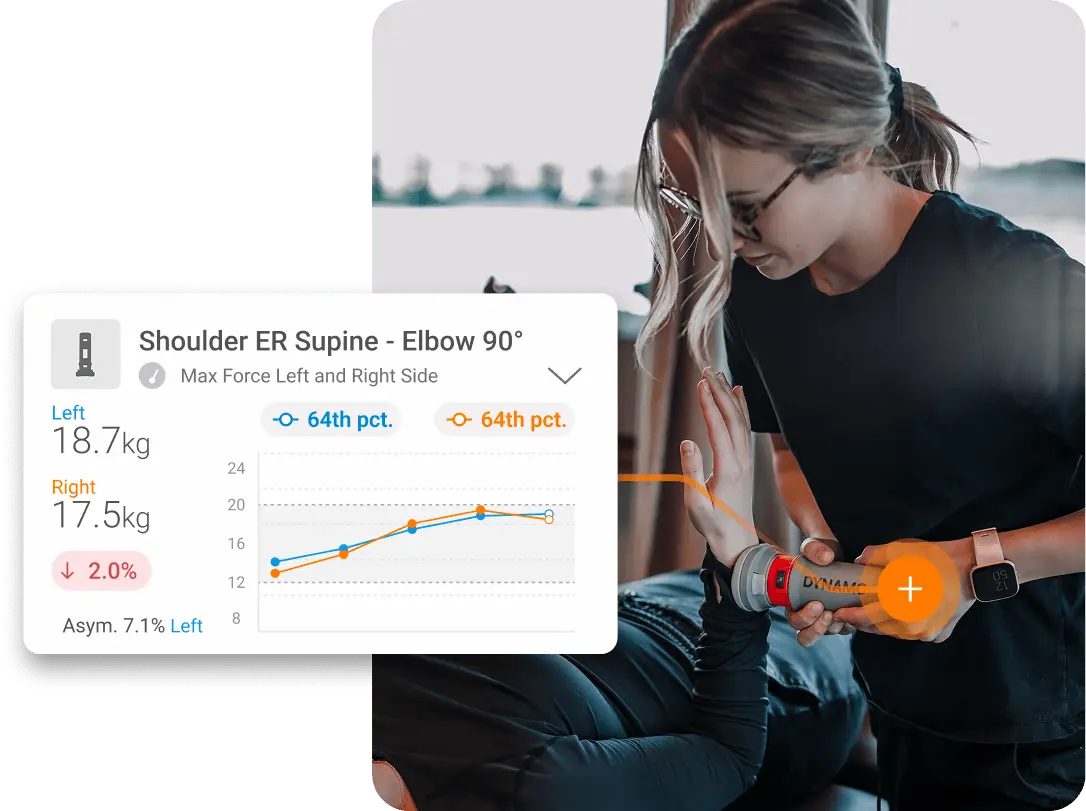
Bloom physiotherapist using DynaMo to assess shoulder external rotation strength.
What elements of digital health have you integrated into practice?
MoveHealth has become our go-to platform. We’ve experimented with other systems in the past – including paid ones – but once we saw how seamlessly it integrates with our testing data and patient profiles, the decision to switch was easy.
…once we saw how seamlessly [MoveHealth] integrates with our testing data and patient profiles, the decision to switch was easy.
Now, we preload patient profiles before they even walk through the door. This eliminates the time wasted on setting profiles up mid-session and allows us to focus entirely on training. After each assessment, I review their results and make real-time adjustments to their program. By the time they leave, their updated plan is already waiting for them in the MoveHealth app.
How have you optimized that process to save time across the team?
A few key changes have helped:
- Preloading profiles before sessions to speed up onboarding
- Building templates for common injury pathways (e.g., week 3 anterior cruciate ligament (ACL) rehabilitation focused on terminal knee extension and quad activation)
- Setting up tablets next to the testing areas to allow immediate updates after assessments, with no need to return to desks
Bloom Physiotherapy’s process for accelerating technology integration.
Training and HEPs in MoveHealth were also a significant time saver. Before, we were building programs from scratch every time. Now, the basics are ready to go, and we simply adjust volumes and intensities or swap exercises based on the individual. The editing tools in MoveHealth make program updates quick and easy.
What impact has this had on patient engagement?
It’s completely changed how patients interact with their programs. I show them what their plan looks like in the app before they leave – exercises, reps and their progress history. That way, they know how to access their data and rehabilitation plan on day one.
Younger athletes, in particular, appreciate the app-based delivery. They’re on their phones anyway, so using that same device to track performance just makes sense. We don’t force our patients to download it, but we’ve seen a very high participation rate, especially after they see the data it provides.
…we’ve seen a very high participation rate [for our patients], especially after they see the data it provides.
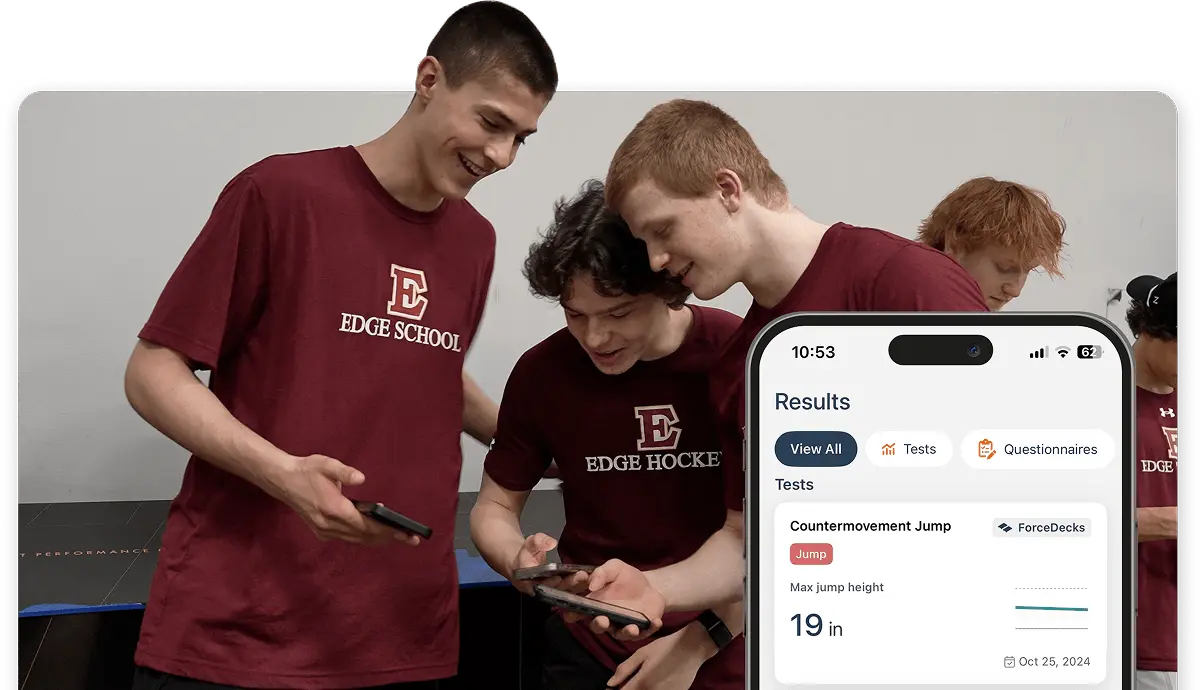
Youth athletes visualizing performance data through the MoveHealth app.
Have these tools improved your ability to work with teams and groups?
Yes, we work with a local sports academy and a competitive gymnastics club. The Group Monitoring Dashboard has made it much easier to flag changes – such as a drop in force output or an increase in asymmetry – allowing us to inform coaches, parents or athletes and act accordingly.
The Group Monitoring Dashboard has made it much easier to flag changes – such as a drop in force output or an increase in asymmetry…
These are 12 to 18-year-old athletes training up to 20 hours a week. We’re not just managing injuries – we’re actively monitoring load to try and prevent them. If we see a significant change in a relevant performance metric, we know that early intervention is the key to keeping them healthy and active.
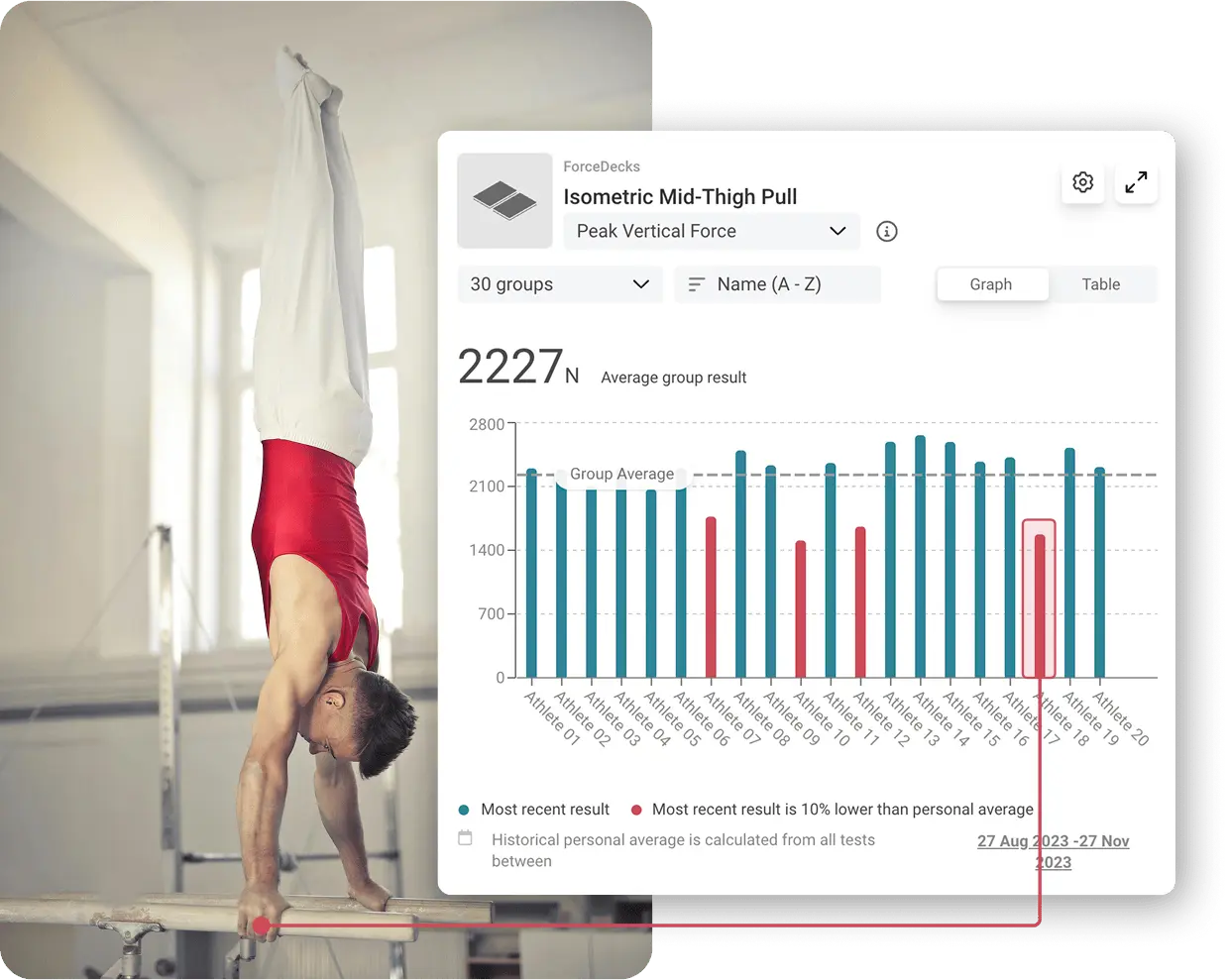
Youth gymnast being flagged for lower force output than usual via the Group Monitoring Dashboard on VALD Hub.
We rarely test our athletes for the sake of it. Instead, we have set timeframes for testing and only modify when an athlete, coach or parent starts a conversation or notices a change. It’s about finding simple ways to monitor what matters and letting that guide decisions.
Final Reflections
We’ve been using VALD systems for two and a half years, and our process has continued to evolve as our ability to glean insights from the technology grows. The depth and breadth of objective testing technology encourage us to dig deeper and uncover new insights to further optimize our care.
Having access to resources and support from the VALD team has been very helpful. Whether it’s a guide or a walkthrough of a feature we haven’t fully used yet, it’s made adoption easier.
Explore VALD’s suite of measurement systems and the MoveHealth platform to see how integrated testing and programming can elevate your practice.
